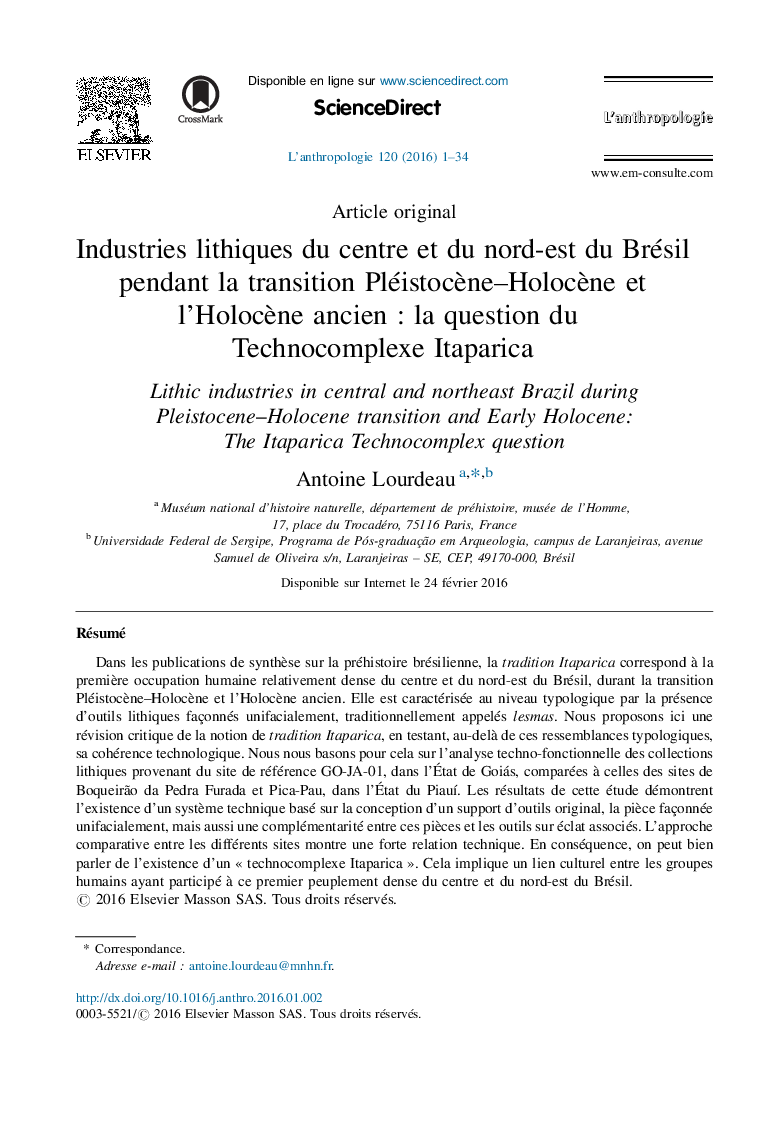| کد مقاله | کد نشریه | سال انتشار | مقاله انگلیسی | نسخه تمام متن |
|---|---|---|---|---|
| 1033625 | 943522 | 2016 | 34 صفحه PDF | دانلود رایگان |
عنوان انگلیسی مقاله ISI
Industries lithiques du centre et du nord-est du Brésil pendant la transition Pléistocène-Holocène et l'Holocène ancien : la question du Technocomplexe Itaparica
دانلود مقاله + سفارش ترجمه
دانلود مقاله ISI انگلیسی
رایگان برای ایرانیان
کلمات کلیدی
موضوعات مرتبط
علوم انسانی و اجتماعی
علوم انسانی و هنر
تاریخ
پیش نمایش صفحه اول مقاله

چکیده انگلیسی
In publications on Brazilian prehistory, the Itaparica tradition corresponds to the first relatively dense human occupation in central and northeast Brazil, during the Pleistocene-Holocene transition and early Holocene. It is characterized in typological terms by the presence of unifacially shaped stone tools, traditionally called lesmas. We present here a critical review of the concept of Itaparica tradition, testing, beyond these typological similarities, its technological coherence. For this, we rely on the techno-functional analysis of lithic collections from reference site GO-JA-01, in State of Goiás, compared to those of sites Boqueirão da Pedra Furada and Pica-Pau, in State of PiauÃ. The results of this study demonstrate the existence of a technical system based on the design of an original tool blank, the unifacially shaped artifact, and a complementarity between these and the associated tool flakes. The comparative approach between the different sites shows a strong technical relationship. Consequently, we can talk about the existence of an “Itaparica technocomplex”. This implies a cultural link between human groups that participated in this first dense peopling of central and northeast Brazil.
ناشر
Database: Elsevier - ScienceDirect (ساینس دایرکت)
Journal: L'Anthropologie - Volume 120, Issue 1, JanuaryâMarch 2016, Pages 1-34
Journal: L'Anthropologie - Volume 120, Issue 1, JanuaryâMarch 2016, Pages 1-34
نویسندگان
Antoine Lourdeau,